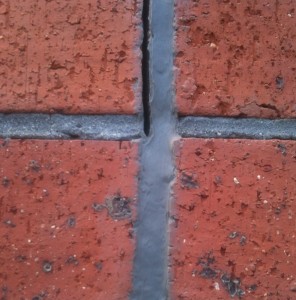What Are Brick Articulation Joints?
When you are looking round your new home build you may think “What’s that gap between the window and the brickwork?” . . . . . . .or even “Why is there a vertical gap between the bricks in the middle of the wall?”
Before you panic it might be worth checking if it is an Articulation Joint.
Why Are There Articulation Joints?
Brick Veneer houses can move for several different reasons including:
- Temperature
- Humidity
- Movement of the frame
- ‘Flexing’ of the foundation
As the structure moves articulation joints are used to accommodate these movements in the structure without cracking.
Unless the soil has been classed as either A or S (see: Soil Classification) vertical articulation joints must be installed in any un-reinforced masonry walls.
Location
In straight walls without openings, the articulation joints must be at a maximum spacing of 6m. They must not be closer than the wall height from the corners.
Where there is a door or window its normal practice to put the joint alongside so they are less obvious.
Construction
For articulation joints next to windows and doors a gap of 10 mm must be left between the edge of the frame and the brickwork.

In a plain wall the gap between bricks again should be 10mm.
The space between the bricks is taken up with a foam filler with a flexible seal on the outside face keeping water out.
The bottom of this photo shows what the finished seal should look like . . . . . . . the top part shows a problem that will needs to be sorted. (normally this tearing of the sealant from the brick is caused when the sealant is too thin)
What you can’t see is that during the construction the bricklayers should be inserting expansion ties across the joint.
During construction it is well worth checking that there is NO MORTAR in the joint. . . . Any mortar will stop the joint acting as it should and can cause cracking over the next few years.
See Bricks for More Posts